Click here and press the right key for the next slide.
(This may not work on mobile or ipad. You can try using chrome or firefox, but even that may fail. Sorry.)
also ...
Press the left key to go backwards (or swipe right)
Press n to toggle whether notes are shown (or add '?notes' to the url before the #)
Press m or double tap to slide thumbnails (menu)
Press ? at any time to show the keyboard shortcuts
Mindreading: Signature Limits, and Development

Mindreading: Signature Limits, and Development
s.butterfill@warwick.ac.uk & c.sinigaglia
In which domains is there substantial evidence for a two systems theory?
And what are the best objections?
How are the two systems distinguished?
What, if any, kind of unity is there across domains?
Why are there two systems?
When, if ever, are two systems better than one?
How, if at all, do the two systems interact? What are the barriers to interaction between them?
1. models
2. processes
Q
How could mindreading be fast + automatic?
nonautomatic mindreading involves
arbitrarily nested
propositional contents
uncodifiably complex causal interactions
normative constraints
...
- a measurable processing cost (Apperly et al., 2008, 2010)
- attention and working memory (Lin et al., 2010 ; McKinnon and Moscovitch, 2007 experiments 4–5)
- inhibition (?) (Bull et al., 2008)
- other demands on executive function (?) (Apperly et al., 2004; Samson et al., 2005).
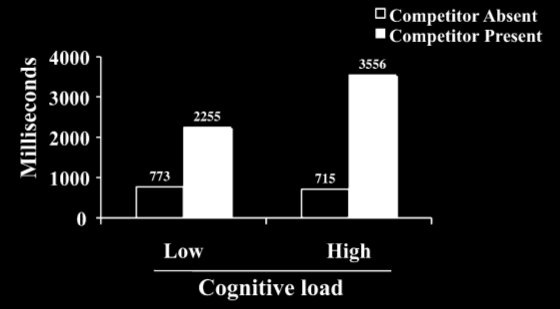
Lin et al (2010, figure 3)
Q
How could mindreading be fast + automatic?
compare physical cognition
faster process : simpler (impetus) model
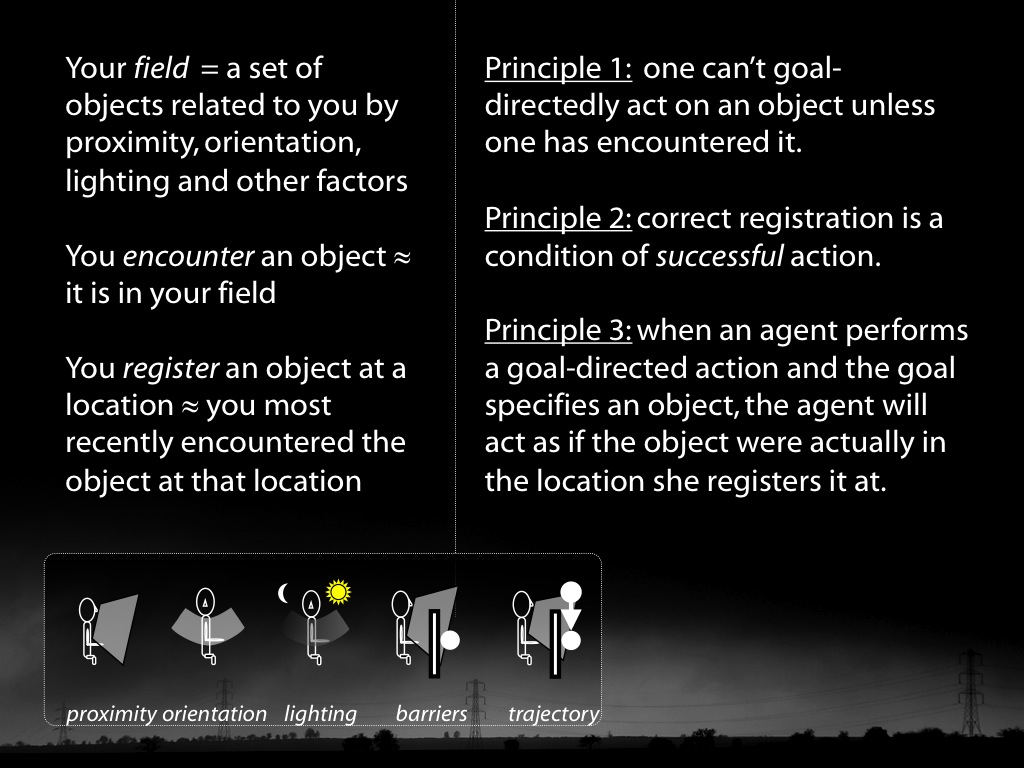
Q
How could mindreading be fast + automatic?
By using a minimal model of minds and actions!
| process | model (physical) | model (mental) |
| fast | impetus | minimal theory of mind |
| slow | Newtonian | belief, desire, intention (?) |
signature limits generate predictions
Hypothesis:
Some automatic belief-tracking processes rely on minimal models of the mental.
Hypothesis:
Some fast object-tracking processes rely on impetus mechanics.
Prediction:
Automatic belief-tracking is subject to the signature limits of minimal models.
Prediction:
Fast object-tracking is subject to the signature limits of impetus mechanics.
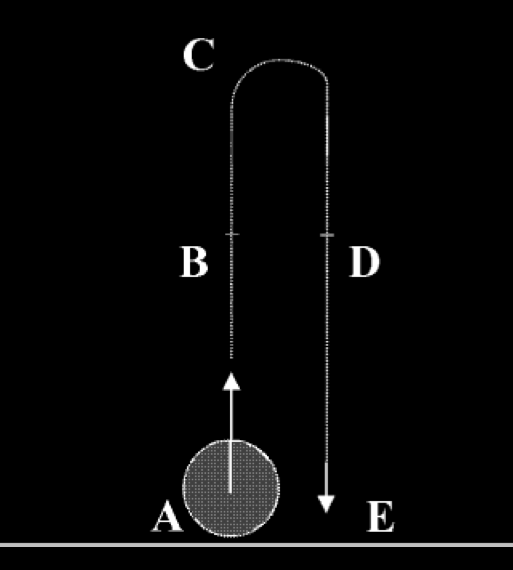
Kozhevnikov & Hegarty (2001, figure 1)


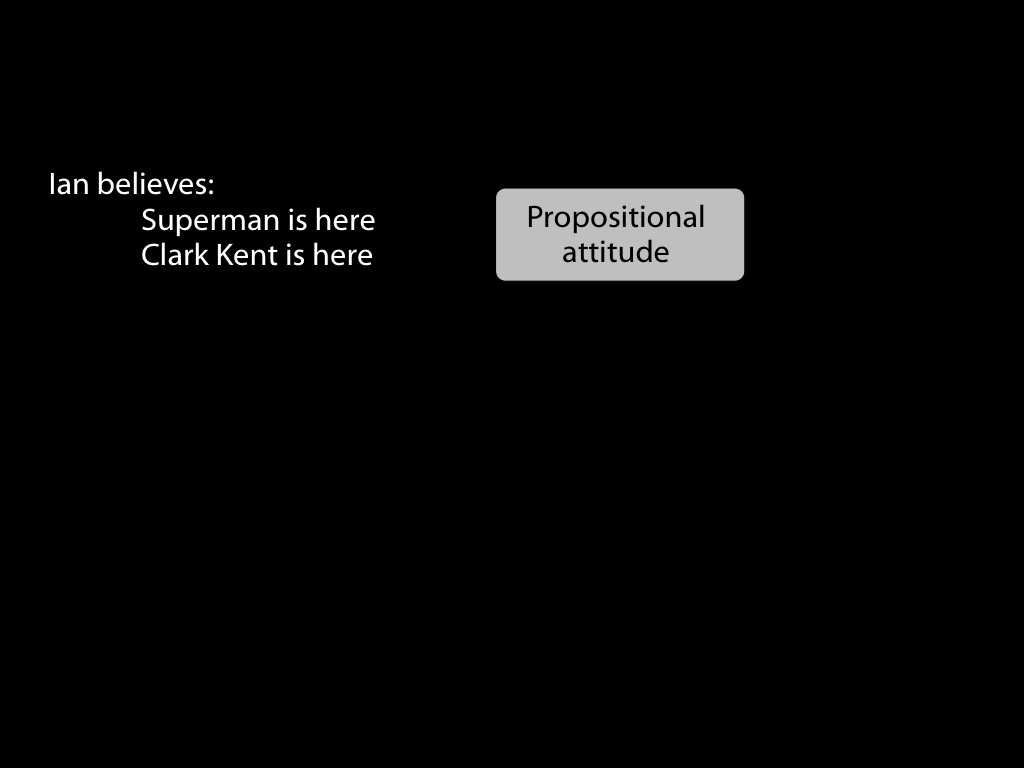

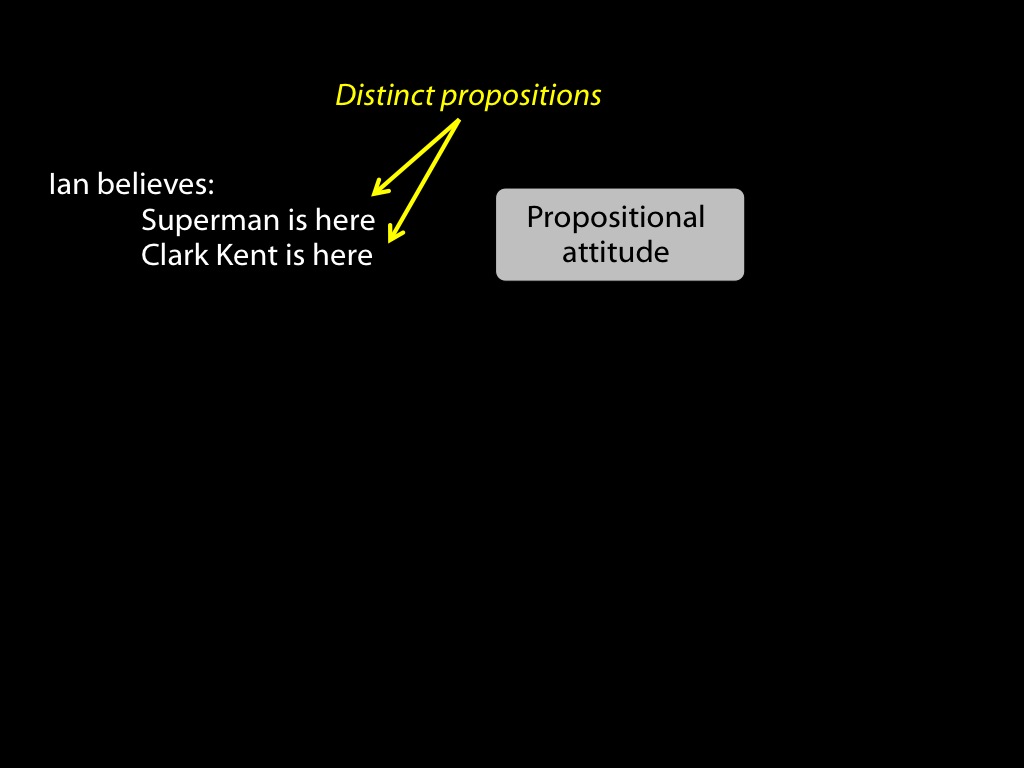

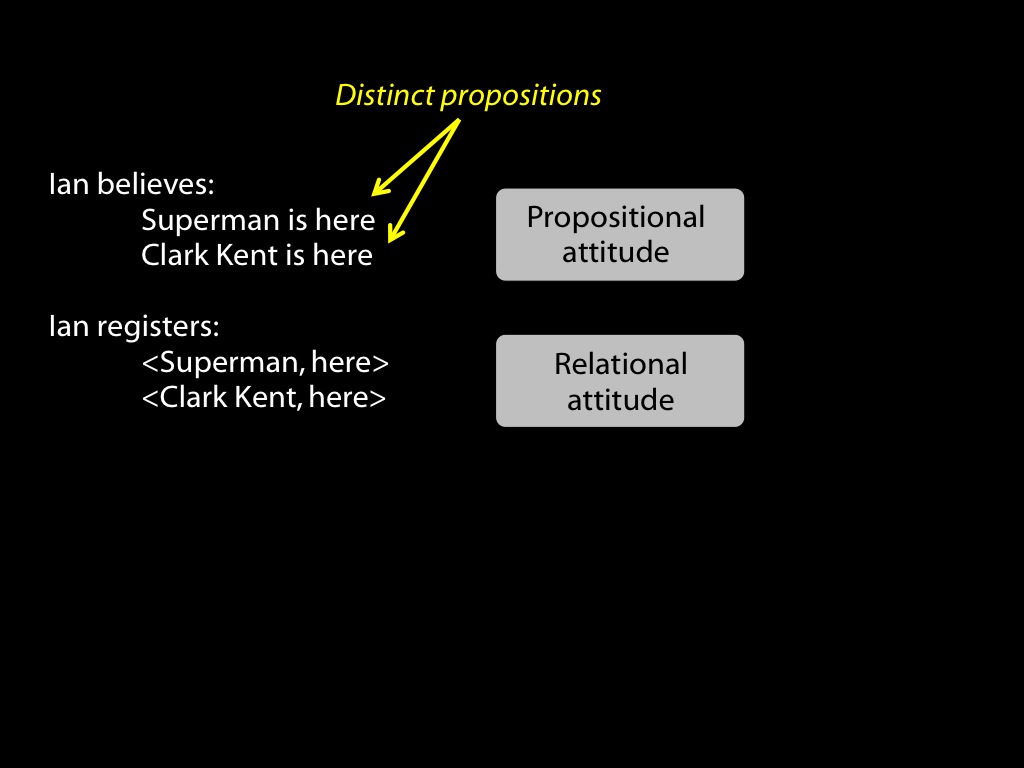

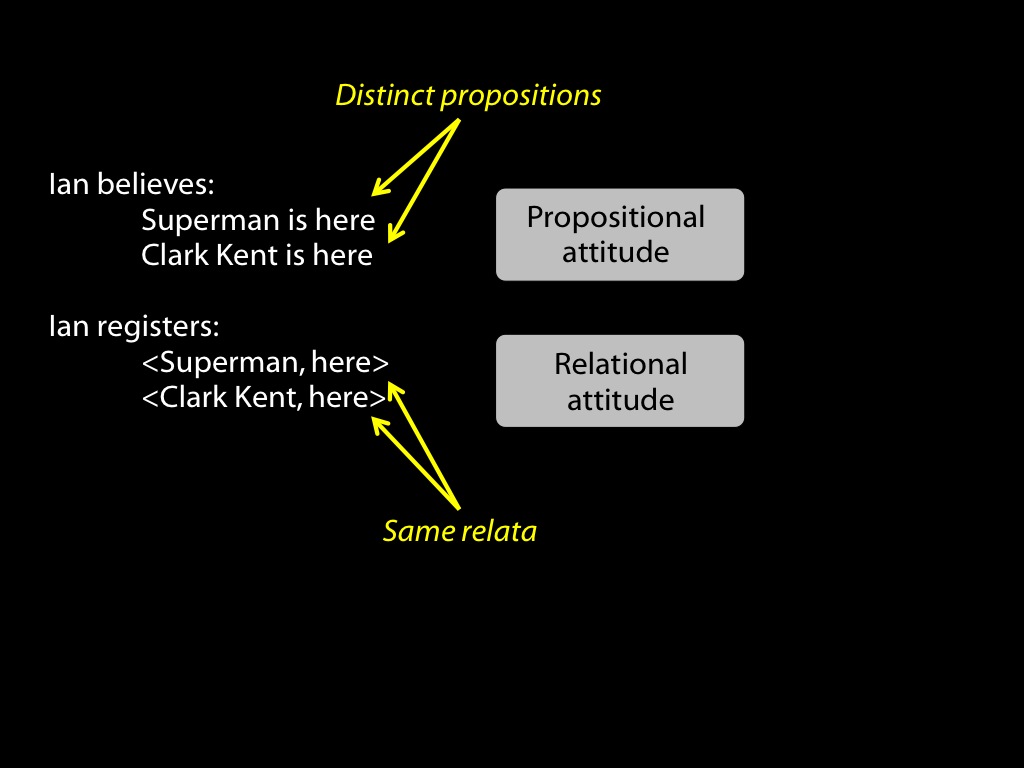

signature limits generate predictions
Hypothesis:
Some automatic belief-tracking processes rely on minimal models of the mental.
Hypothesis:
Some fast object-tracking processes rely on impetus mechanics.
Prediction:
Automatic belief-tracking is subject to the signature limits of minimal models.
Prediction:
Fast object-tracking is subject to the signature limits of impetus mechanics.

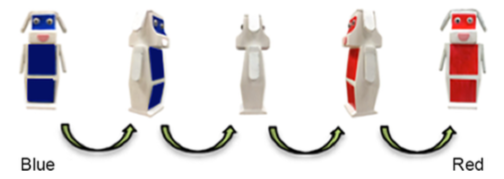
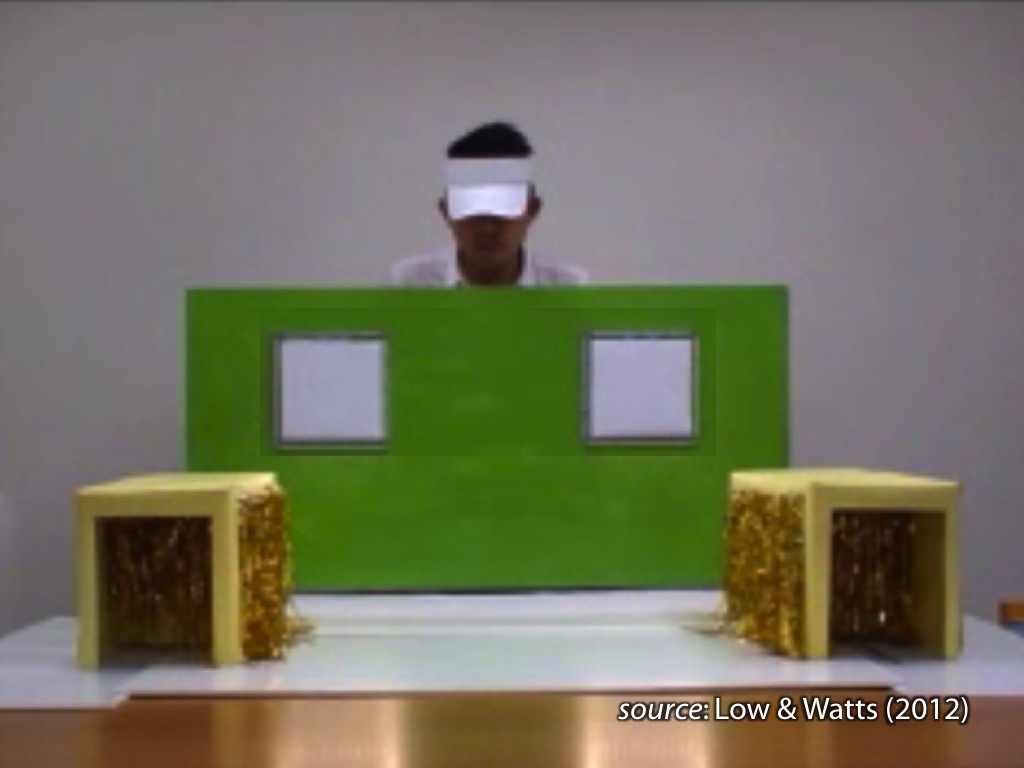
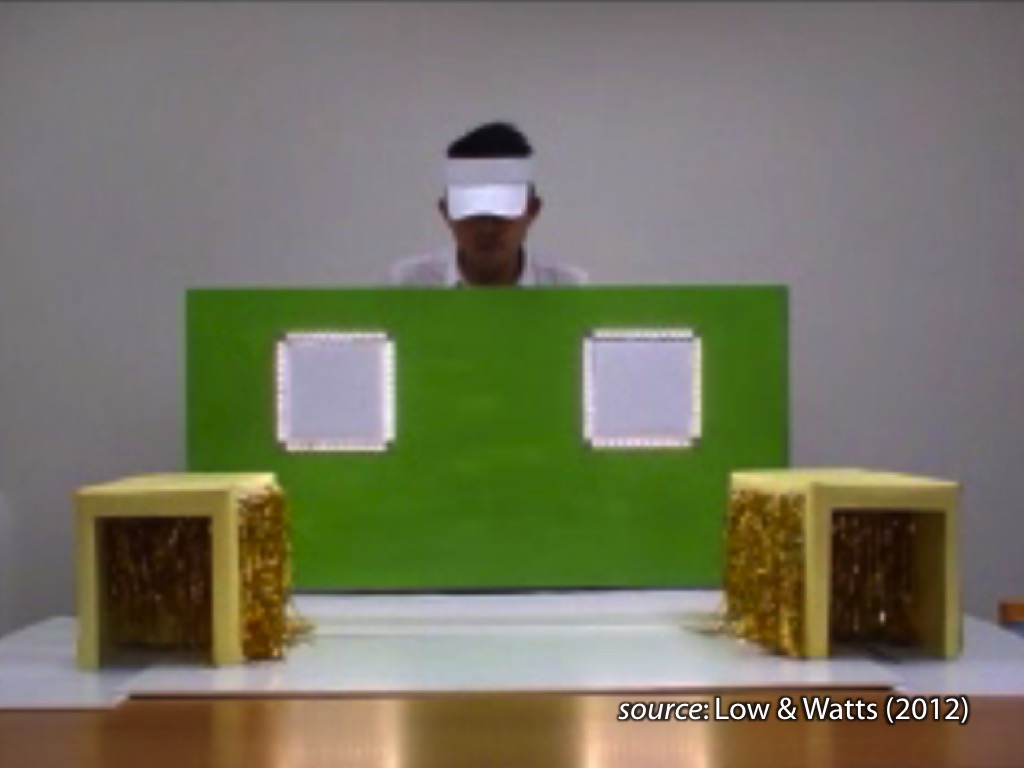

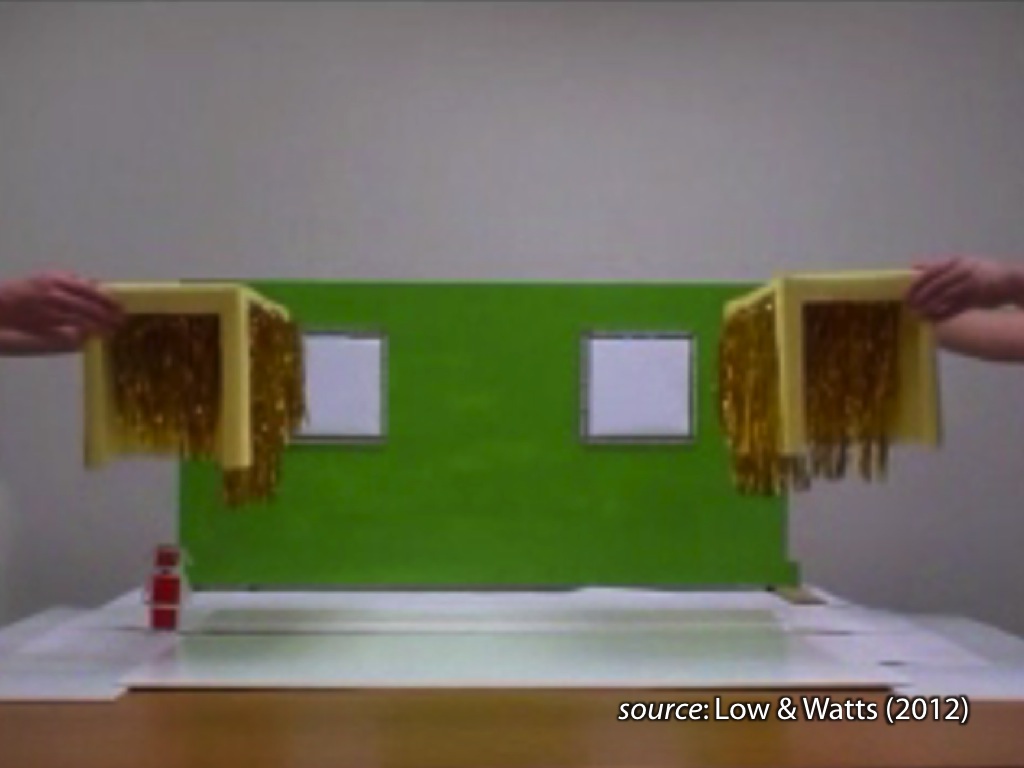
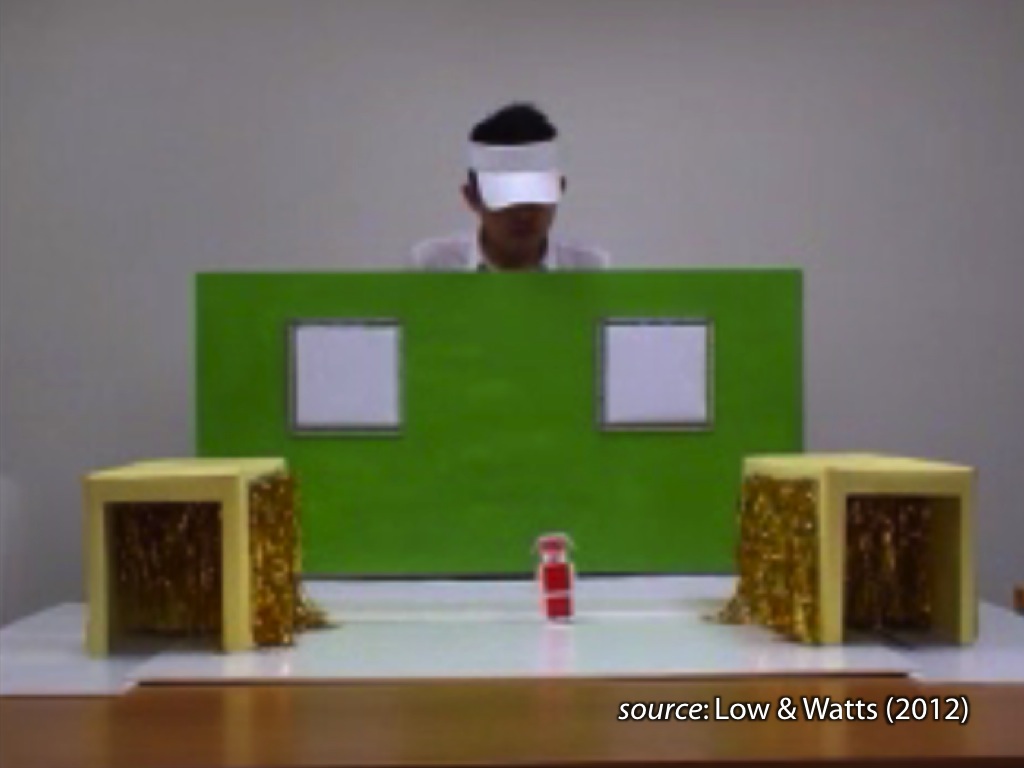
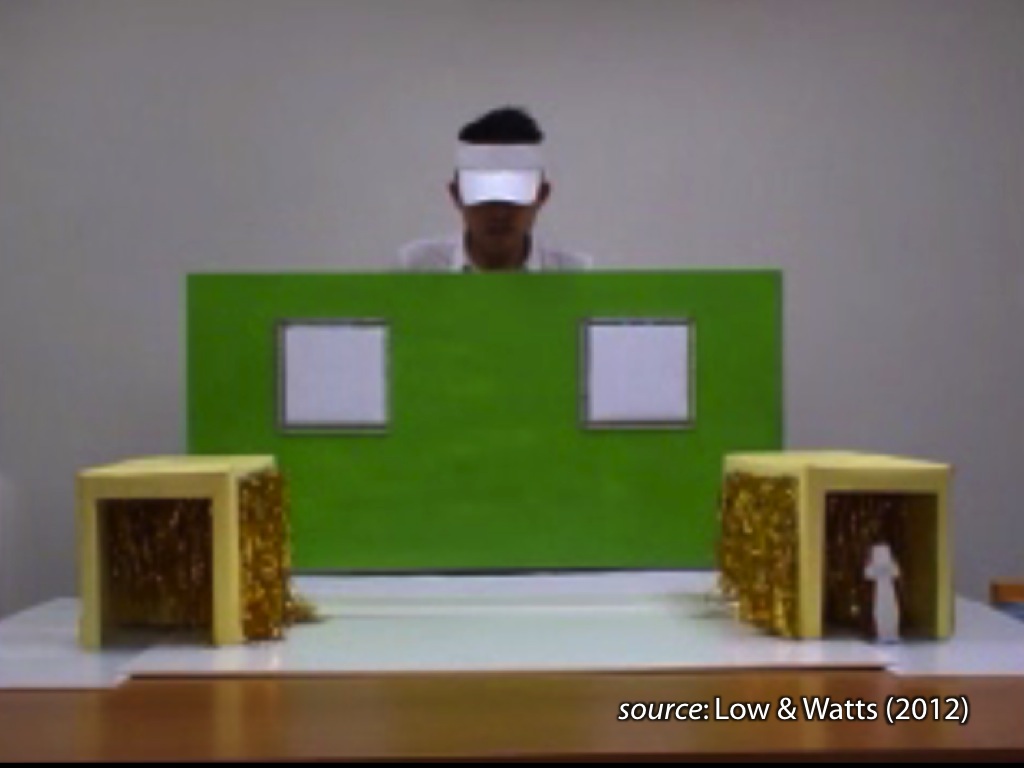
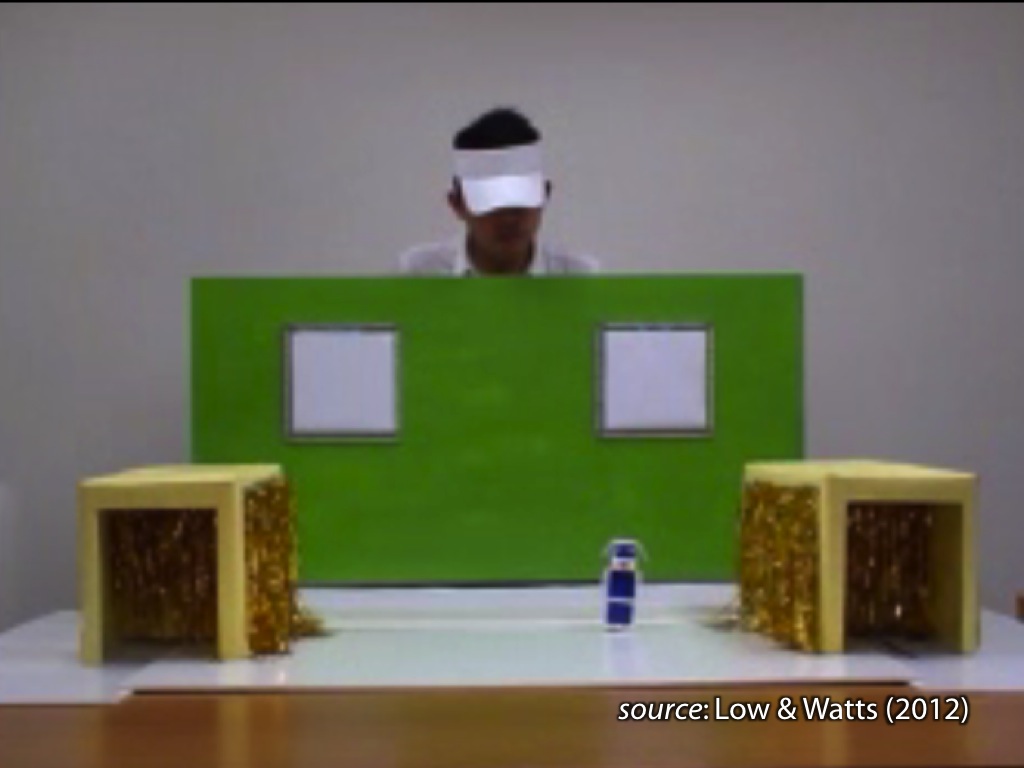
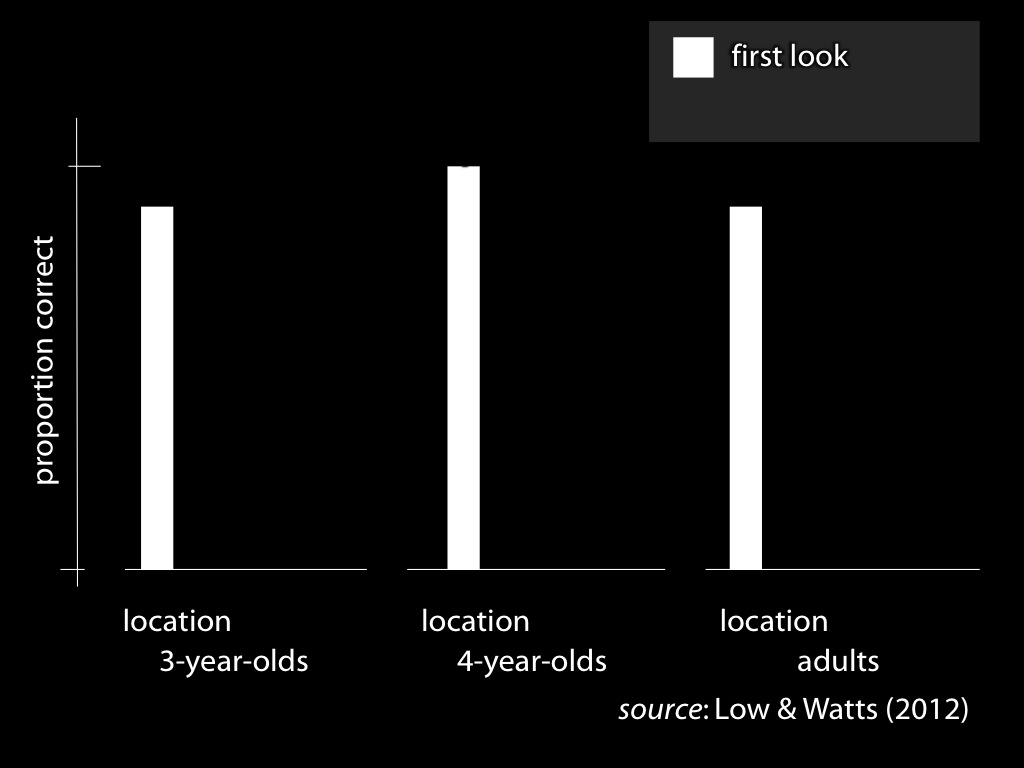
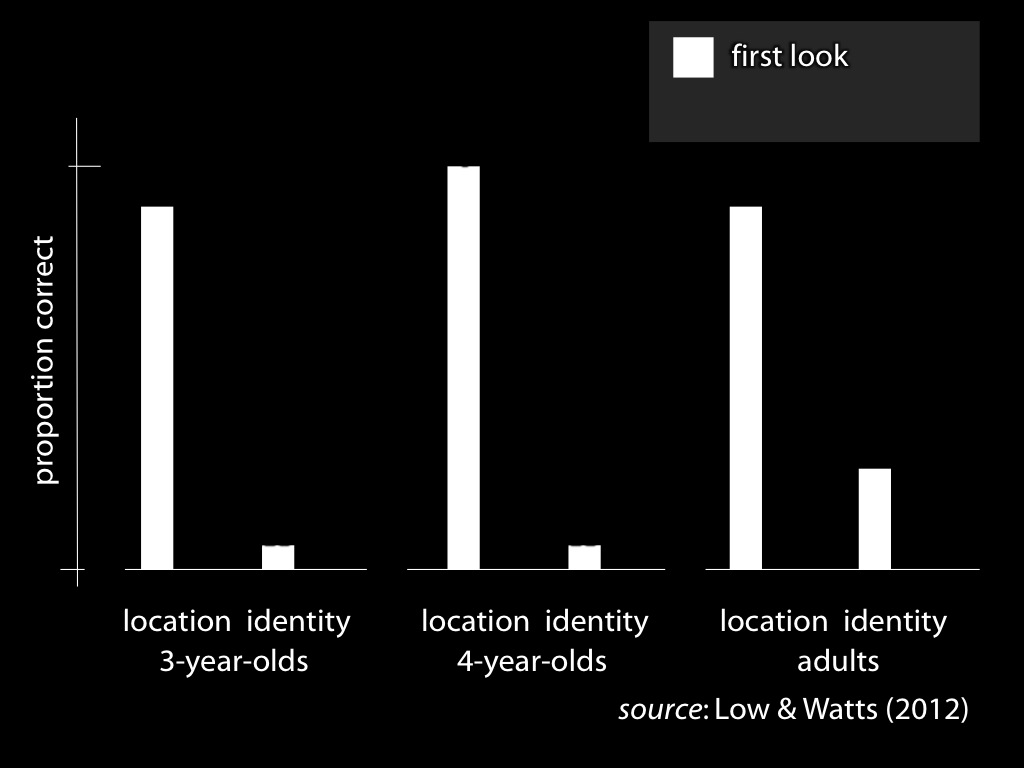
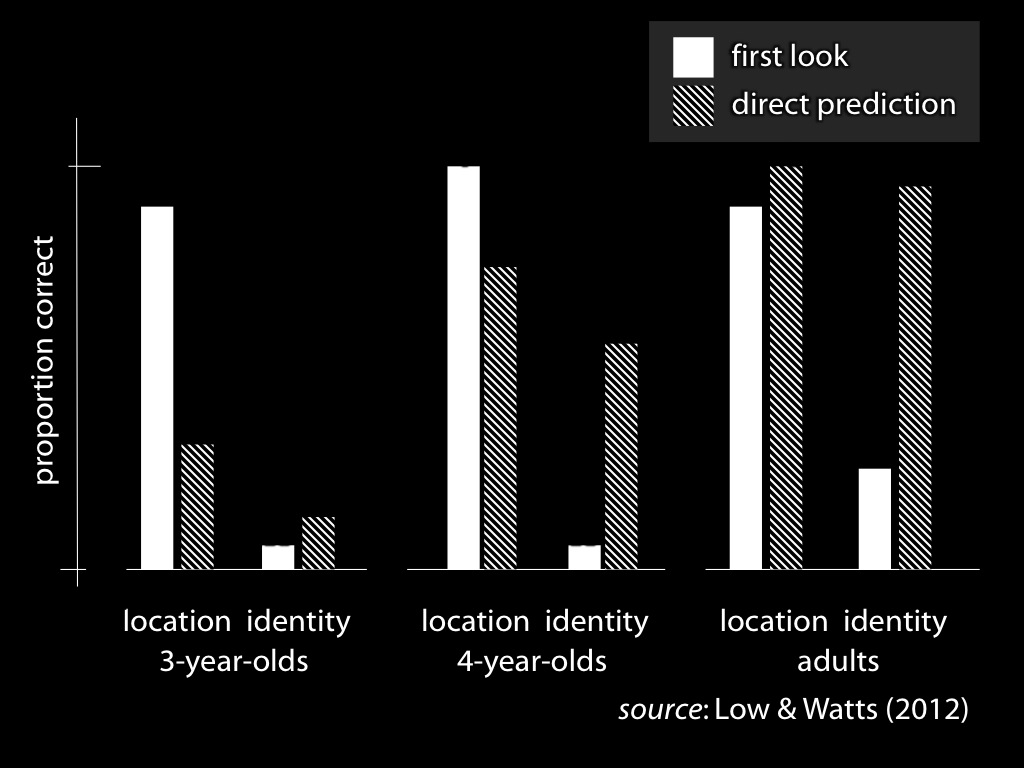
Objection
‘the Low and Watts (2013) paradigm was robustly replicated’
but ...
‘the original pattern of belief-congruent looking could be reproduced only under conditions in which the belief congruency of the locations is confounded with additional factors, and therefore, this pattern might not reflect belief-based anticipation’ (Kulke, von Duhn, Schneider, & Rakoczy, 2018, p. 9).
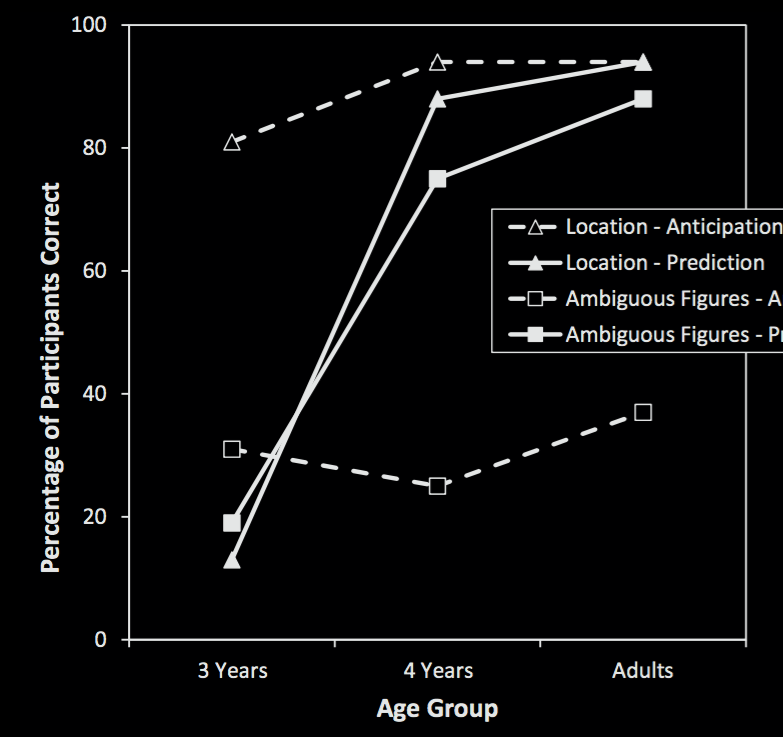
Low et al, 2014 figure 2
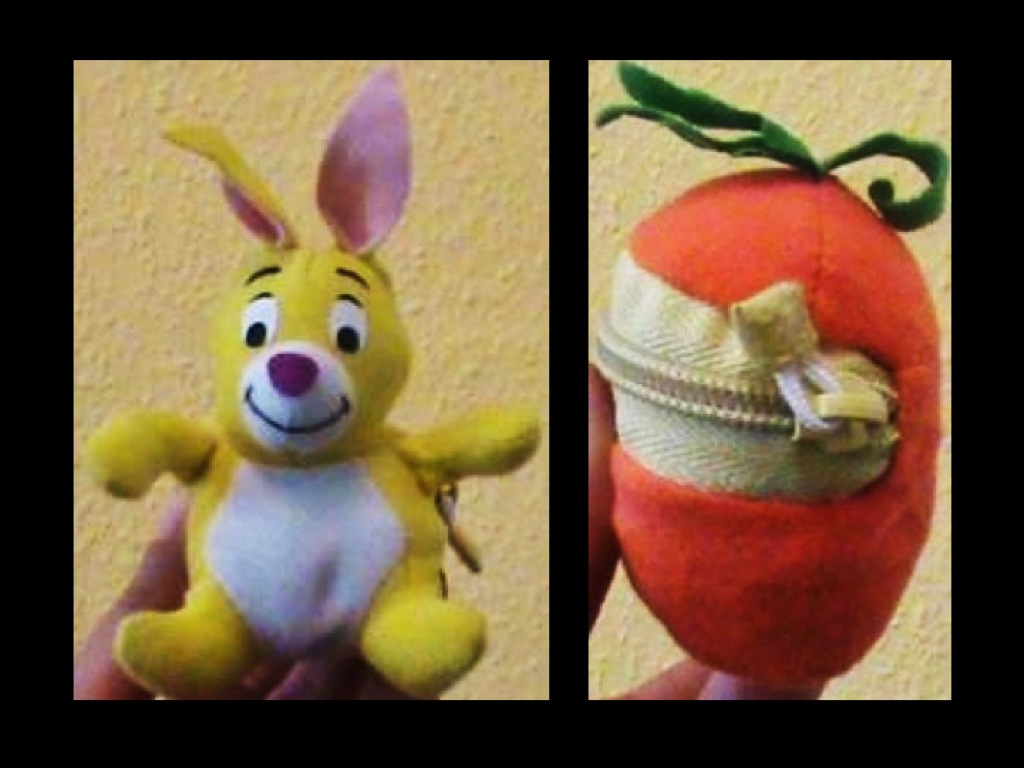
signature limits generate predictions
Hypothesis:
Some automatic belief-tracking processes rely on minimal models of the mental.
Hypothesis:
Some fast object-tracking processes rely on impetus mechanics.
Prediction:
Automatic belief-tracking is subject to the signature limits of minimal models.
Prediction:
Fast object-tracking is subject to the signature limits of impetus mechanics.
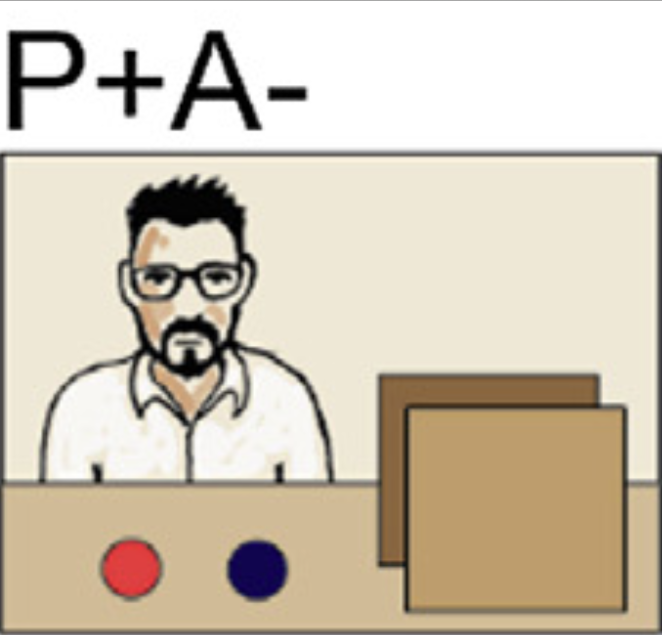
Edwards and Low, 2019 figure 1
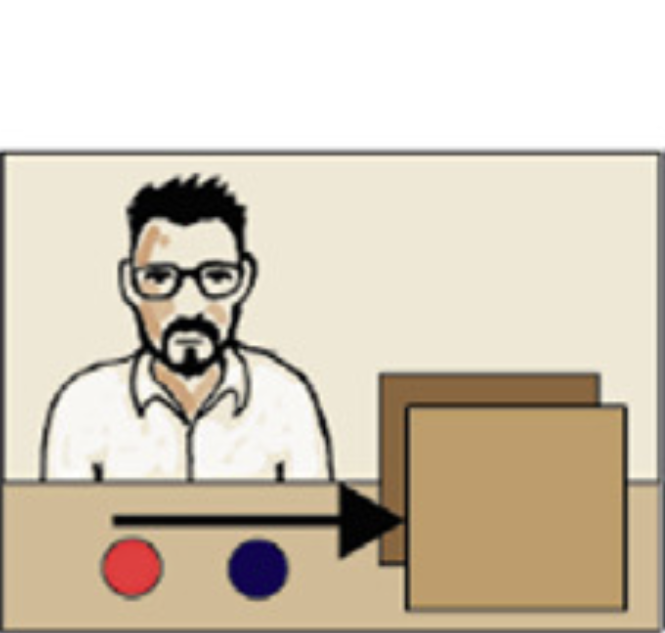
Edwards and Low, 2019 figure 1
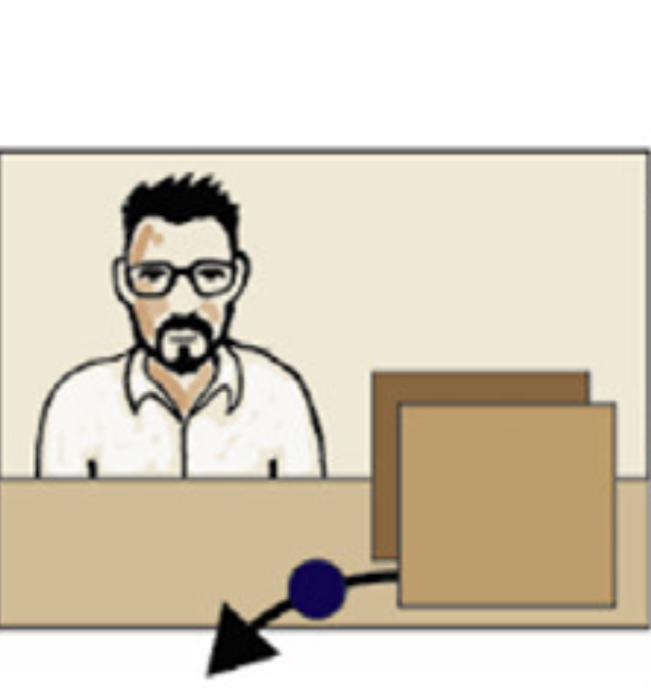
Edwards and Low, 2019 figure 1
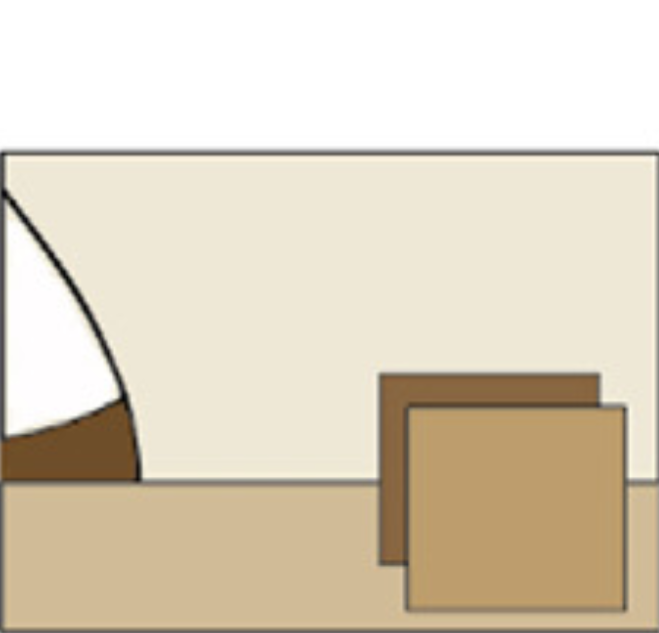
Edwards and Low, 2019 figure 1
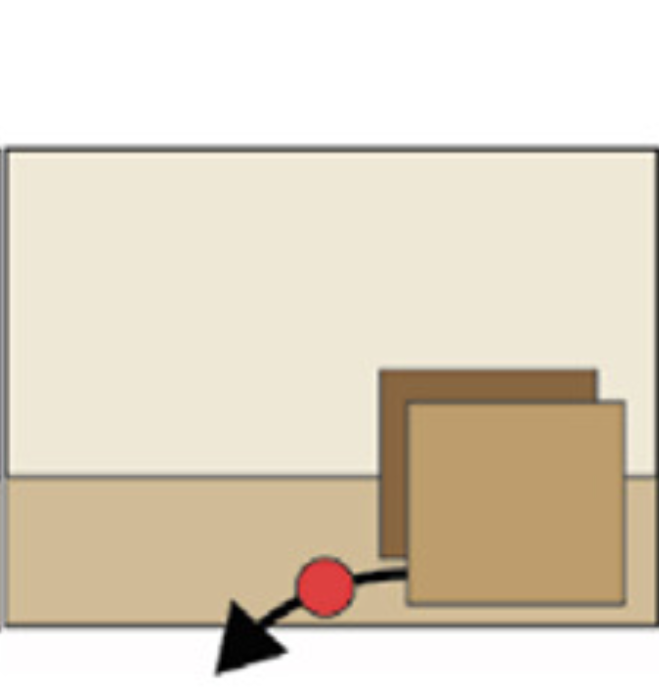
Edwards and Low, 2019 figure 1
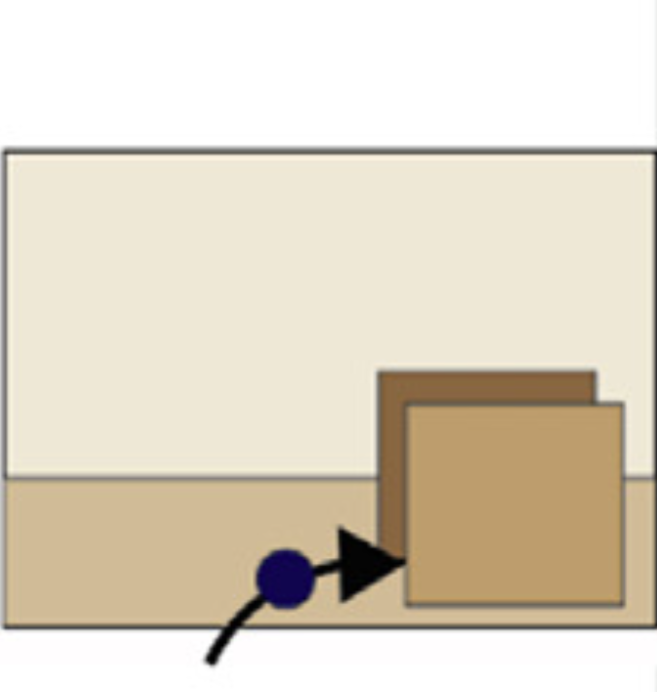
Edwards and Low, 2019 figure 1
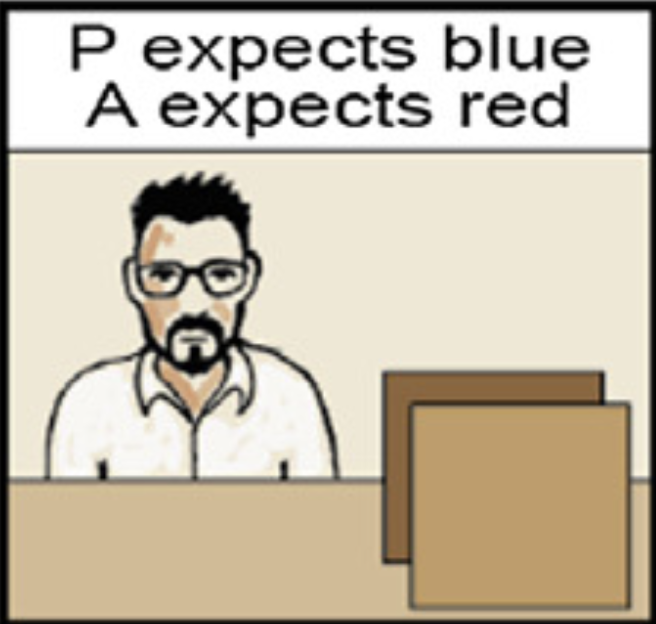
Edwards and Low, 2019 figure 1
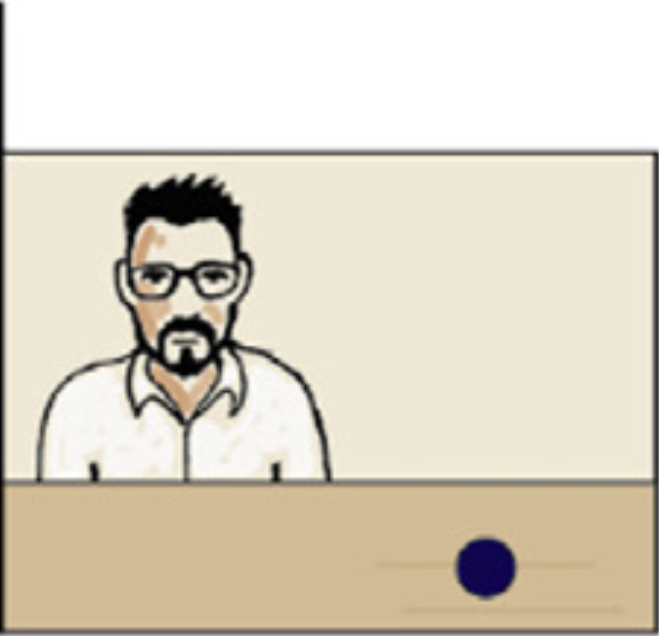
Edwards and Low, 2019 figure 1
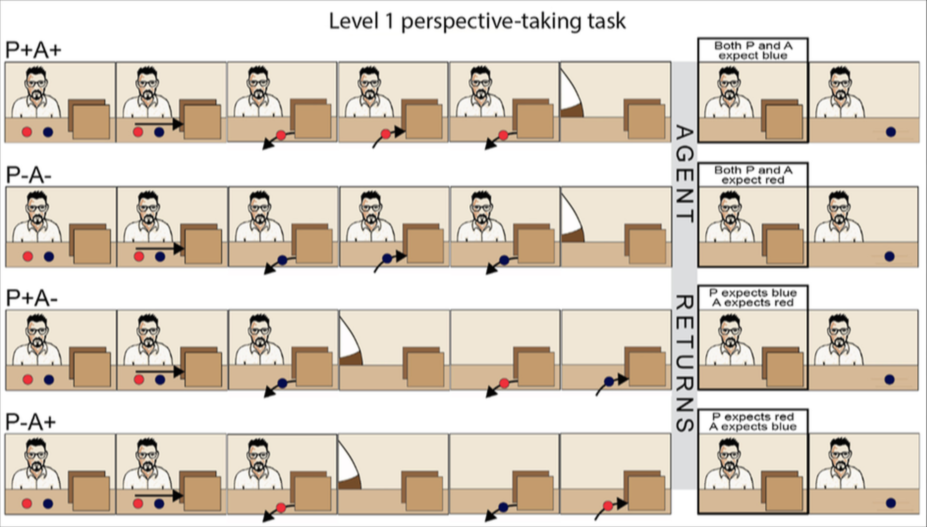


Edwards and Low, 2019 figure 1
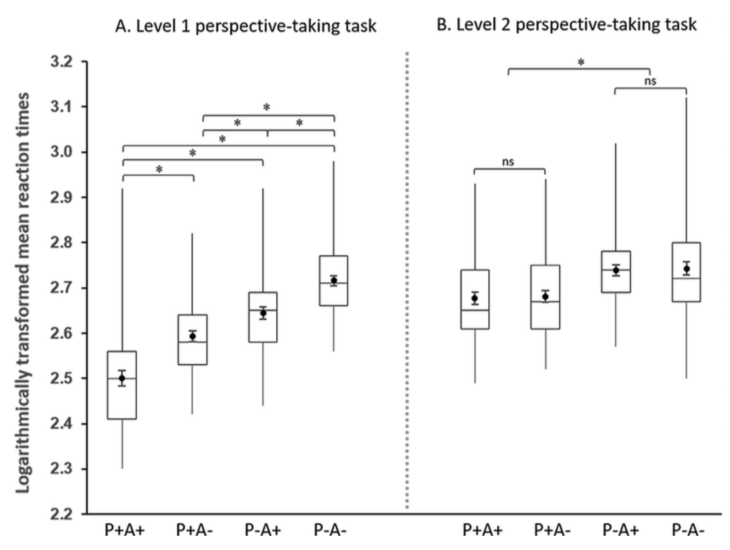
Edwards and Low, 2019 figure 4 (part)
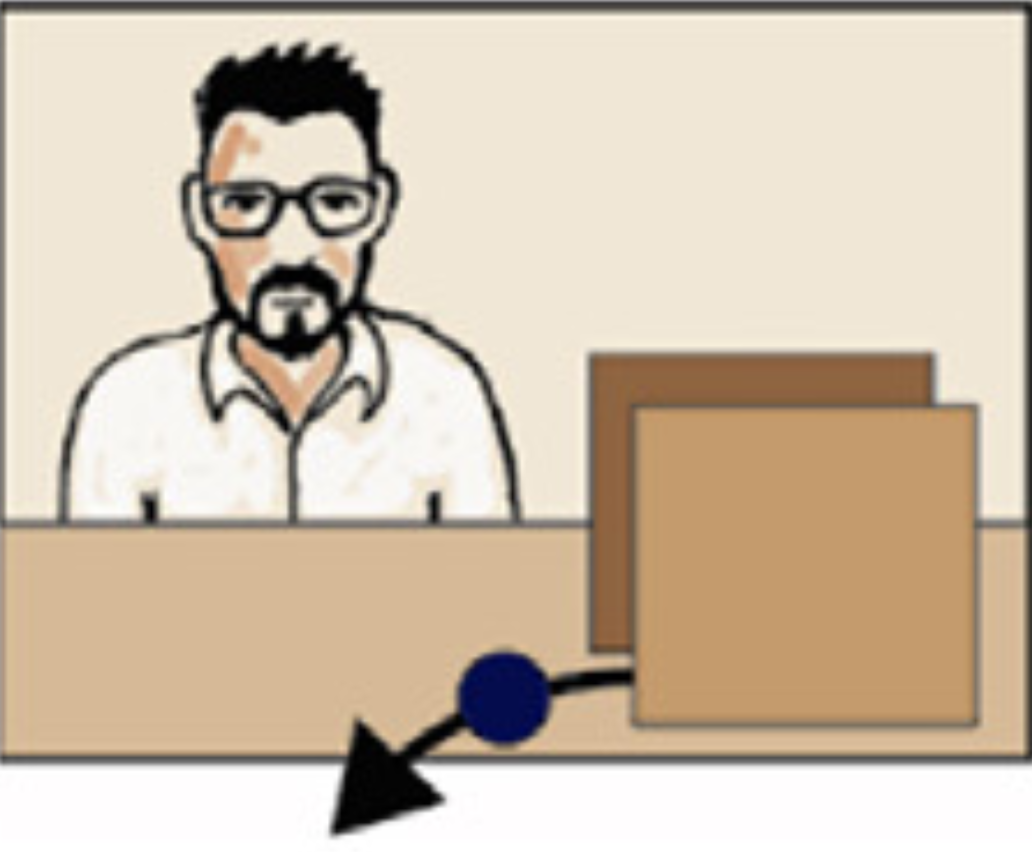
Edwards and Low, 2019 figure 1
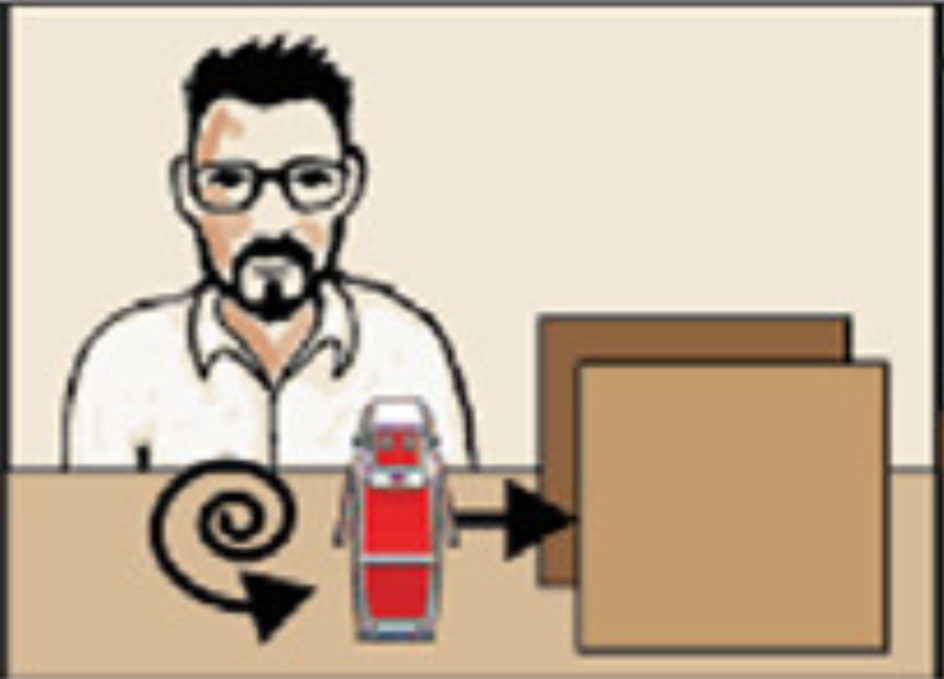
Edwards and Low, 2019 figure 2
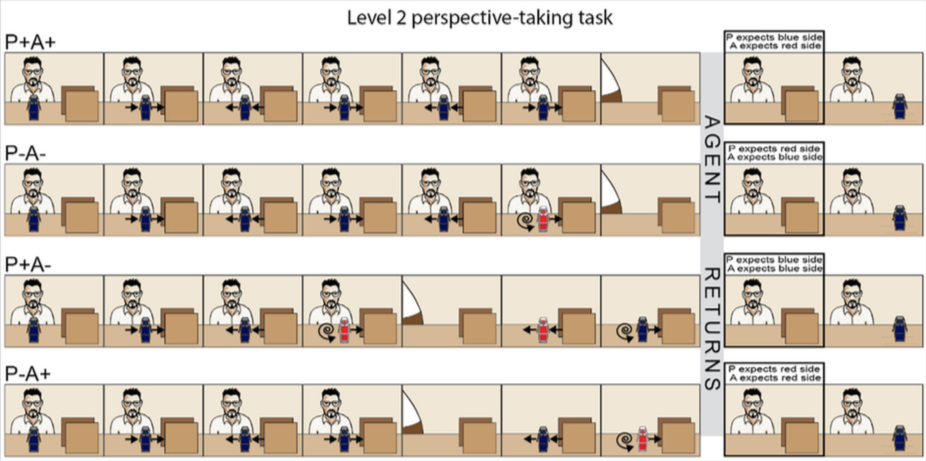
Edwards and Low, 2019 figure 1

Edwards and Low, 2019 figure 4 (part)
signature limits generate predictions
Hypothesis:
Some automatic belief-tracking processes rely on minimal models of the mental.
Hypothesis:
Some fast object-tracking processes rely on impetus mechanics.
Prediction:
Automatic belief-tracking is subject to the signature limits of minimal models.
Prediction:
Fast object-tracking is subject to the signature limits of impetus mechanics.
Q
How could mindreading be fast + automatic?
By using a minimal model of minds and actions!

Two Systems Theory of Mindreading
Two (or more) processes concerning X are distinct:
the conditions which influence whether they occur,
and which outputs they generate,
do not completely overlap.
One process makes fewer demands on scarce cognitive resources than the other.
(Terminology: fast vs slow)
auxiliary hypothesis 1: one process is more automatic than another
auxiliary hypothesis 2: the fast process uses a minimal model of minds and actions
In which domains is there substantial evidence for a two systems theory?
And what are the best objections?
How are the two systems distinguished?
What, if any, kind of unity is there across domains?
Why are there two systems?
When, if ever, are two systems better than one?
How, if at all, do the two systems interact? What are the barriers to interaction between them?
appendix
more evidence
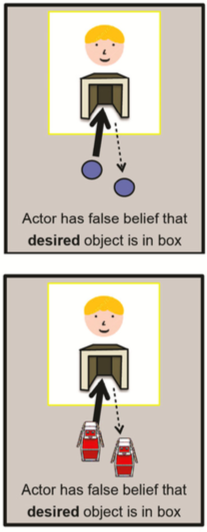
Edwards and Low, 2017 figure 7a
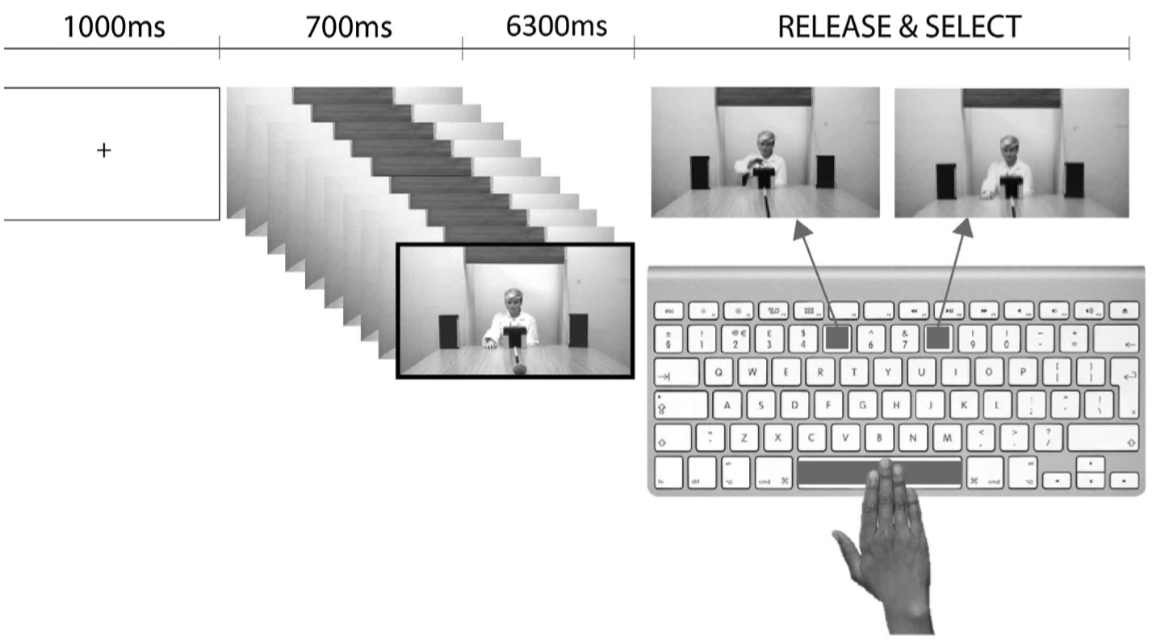
Edwards and Low, 2017 figure 7a
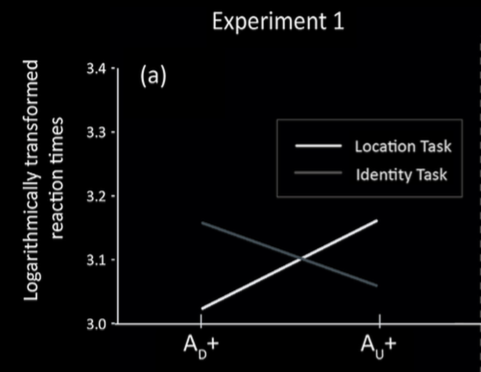
Edwards and Low, 2017 figure 7a
signature limits generate predictions
Hypothesis:
Some automatic belief-tracking processes rely on minimal models of the mental.
Hypothesis:
Some fast object-tracking processes rely on impetus mechanics.
Prediction:
Automatic belief-tracking is subject to the signature limits of minimal models.
Prediction:
Fast object-tracking is subject to the signature limits of impetus mechanics.
appendix
a puzzle about development











Low et al, 2014 figure 2
puzzle
Why is there an interaction with age?
signature limits generate predictions
Hypothesis:
Some automatic belief-tracking processes rely on minimal models of the mental.
Hypothesis:
Infants’ belief-tracking abilities involve fast processes and only fast processes.
Prediction:
Automatic belief-tracking is subject to the signature limits of minimal models.
Prediction:
Infants’ belief-tracking is subject to the signature limits of minimal models.
reidentifying systems:
same signature limit -> same process


Low et al, 2014 figure 2
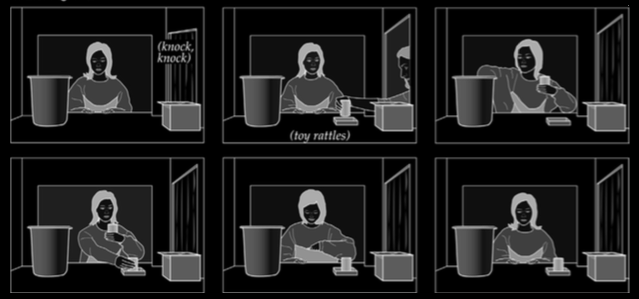
Scott et al (2015, figure 2b)
‘the theoretical arguments offered [...] are [...] unconvincing, and [...] the data can be explained in other terms’
Carruthers (2015)
signature limits generate predictions
Hypothesis:
Some automatic belief-tracking processes rely on minimal models of the mental.
Hypothesis:
Infants’ belief-tracking abilities involve fast processes and only fast processes.
Prediction:
Automatic belief-tracking is subject to the signature limits of minimal models.
Prediction:
Infants’ belief-tracking is subject to the signature limits of minimal models.
puzzle
Why is there an interaction with age?
Because infants’ belief-tracking abilities involve fast processes and only fast processes?
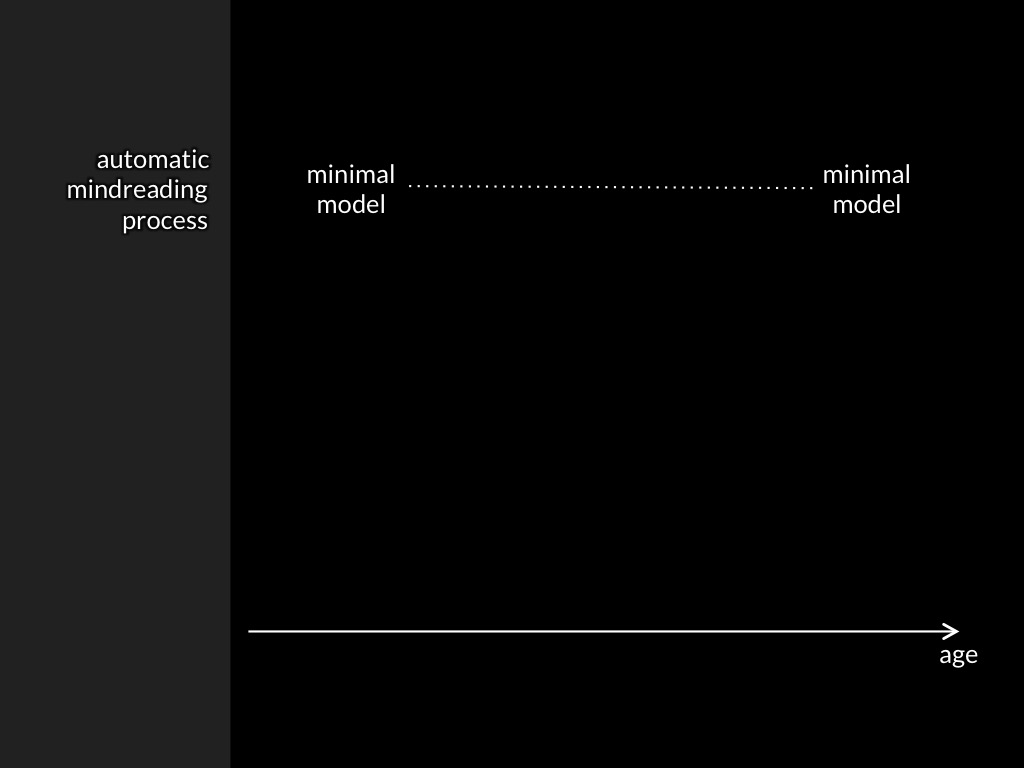
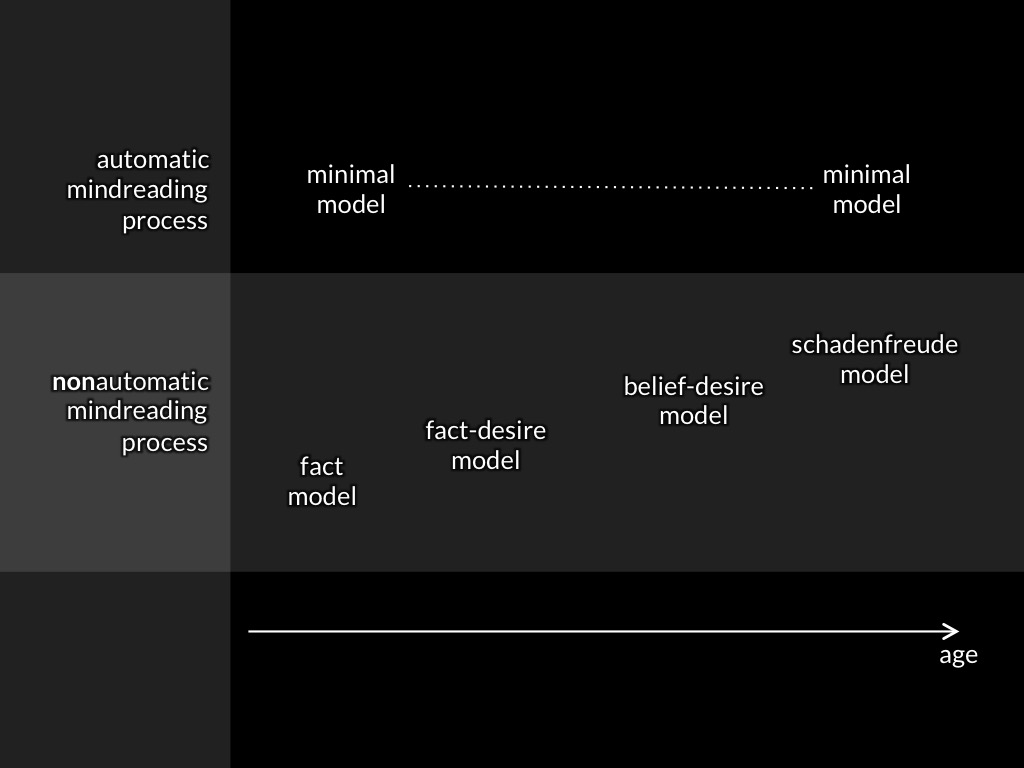

Low et al, 2014 figure 2

appendix
nonhumans
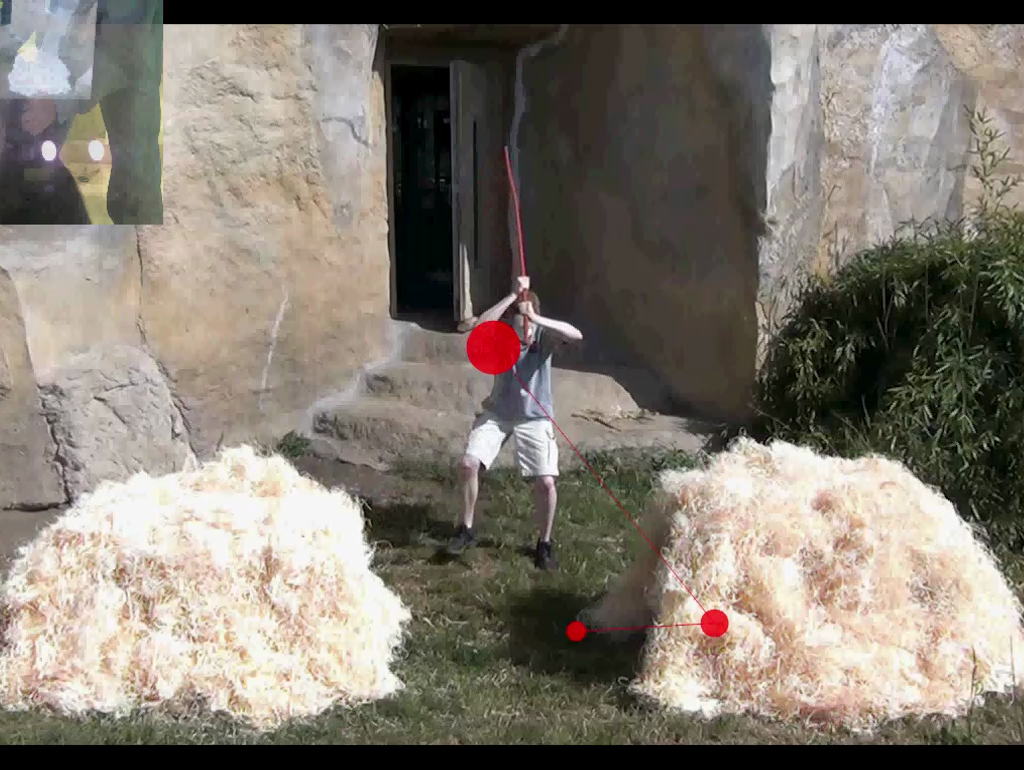
reidentifying systems:
same signature limit -> same process
1. models
2. processes
Crude Picture of the Mind
- epistemic
(knowledge states) - broadly motoric
(motor representations of outcomes and affordances) - broadly perceptual
(visual, tactual, ... representations; object indexes ...)
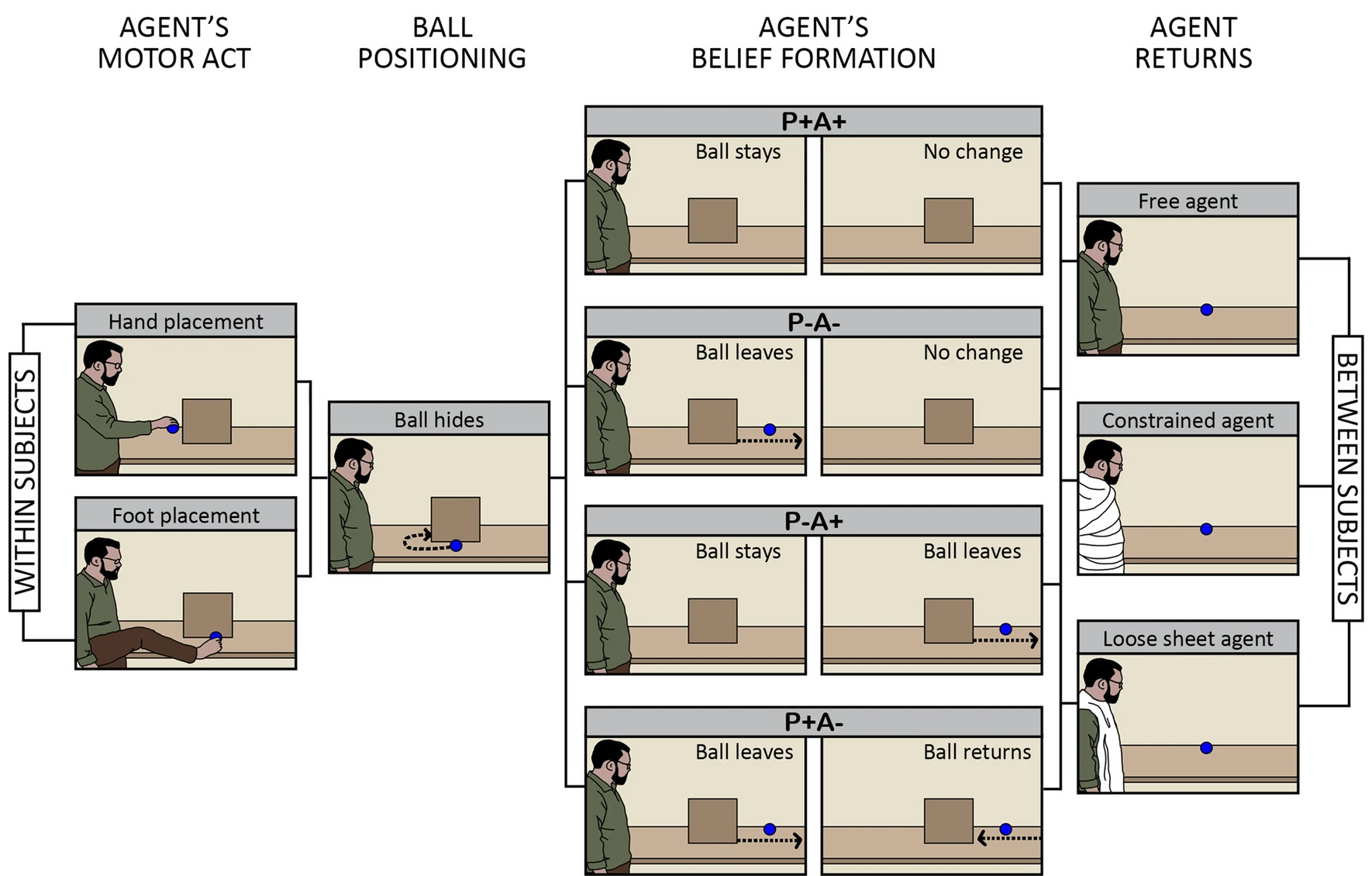
(Low, Edwards, & Butterfill, 2020, p. figure 1)
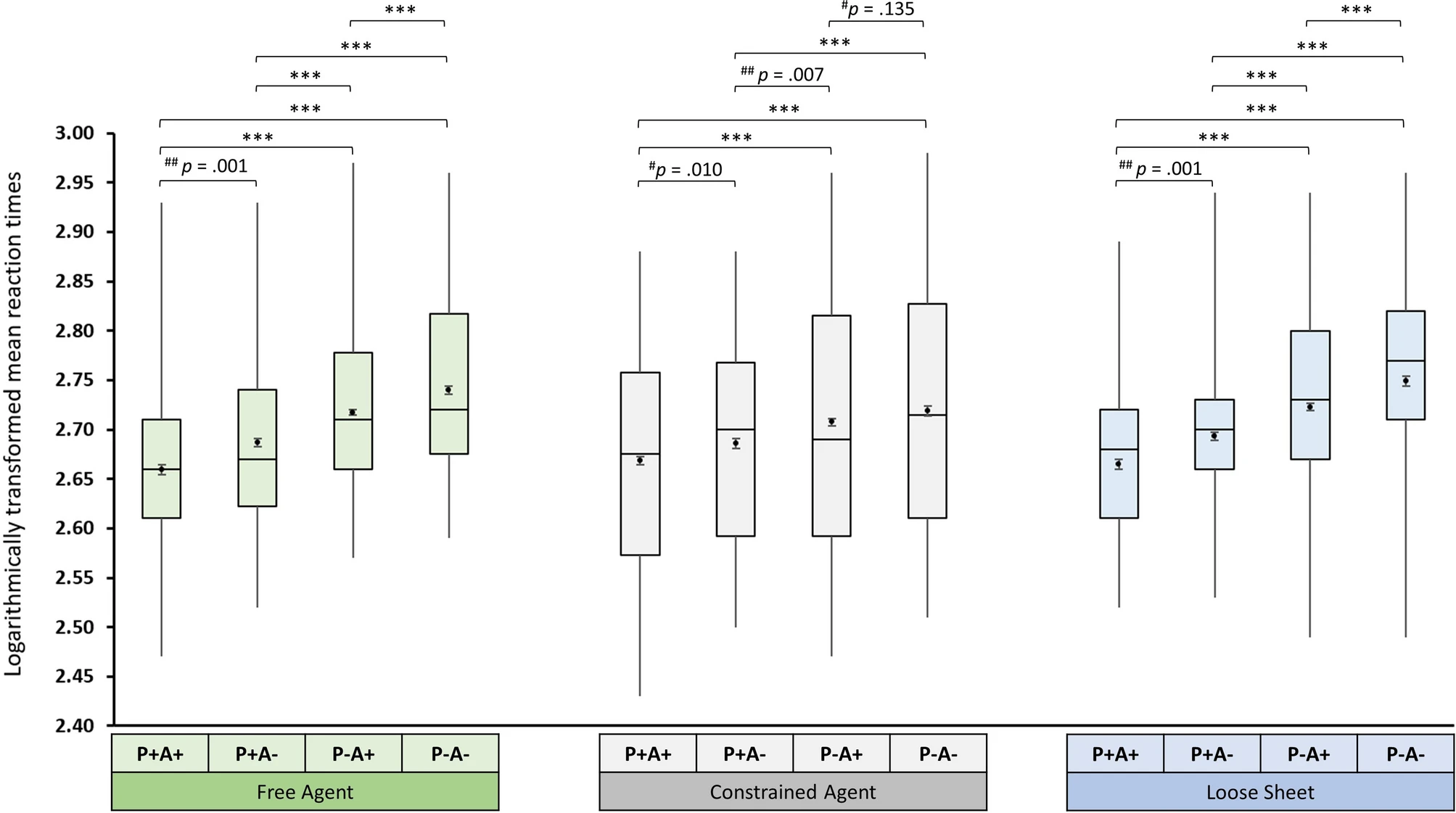
(Low et al., 2020, p. figure 2)

(Low et al., 2020, p. figure 3)